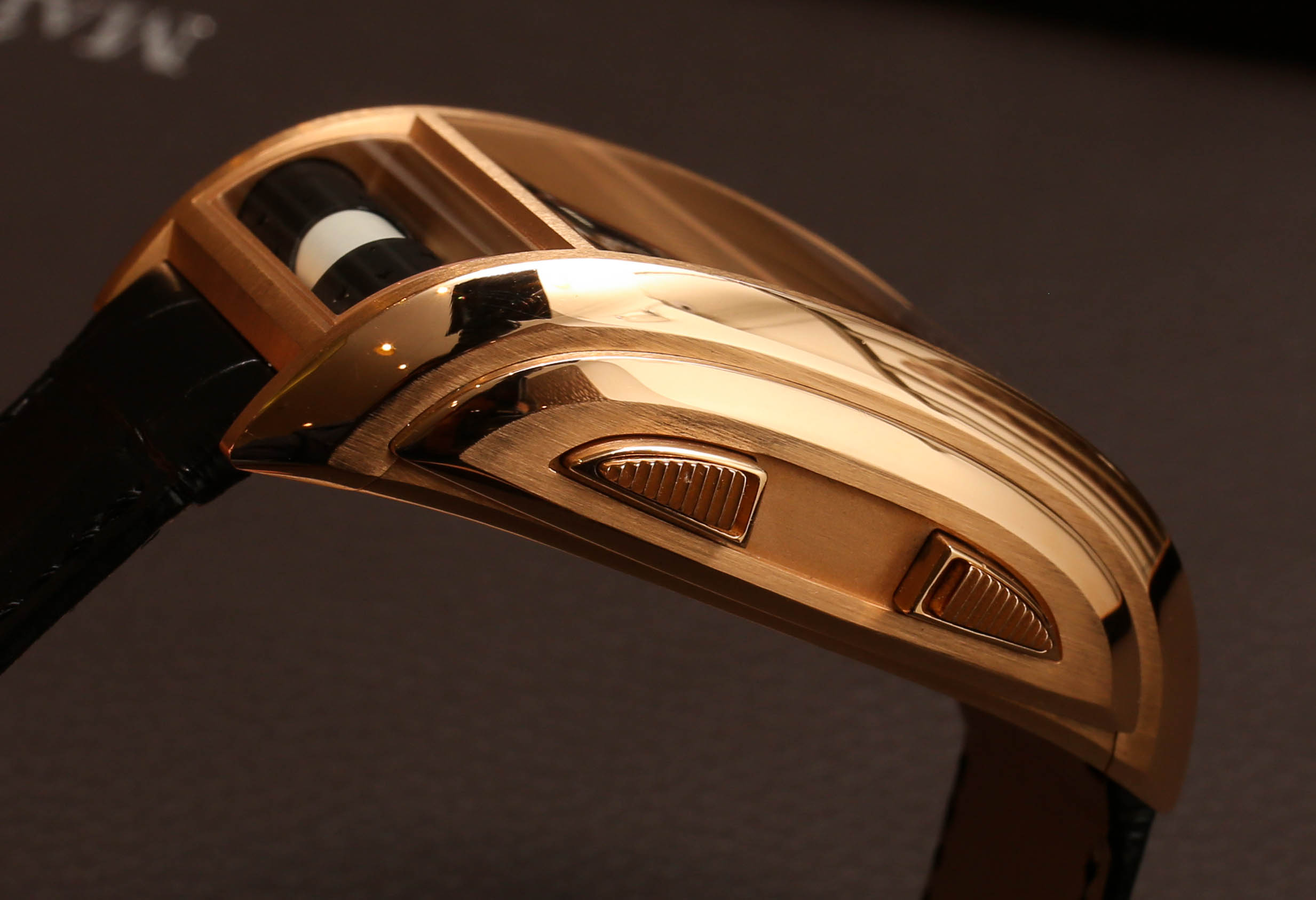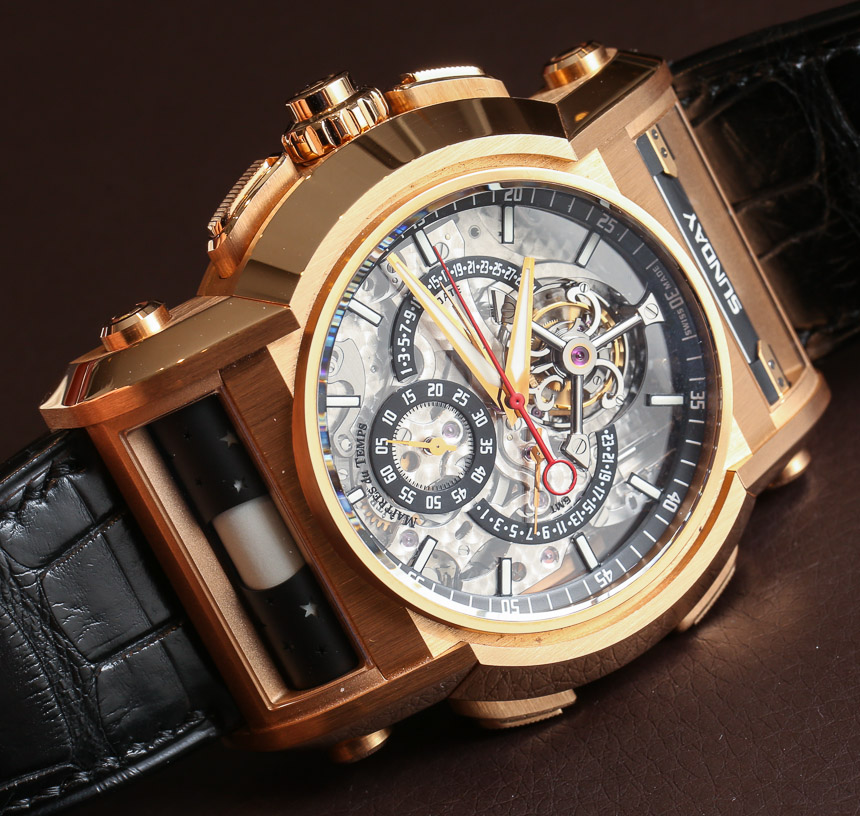
The Maitres du Temps Chapter One Transparence watches are currently the most expensive in the already expensive brand’s lineup. There are a few versions and they are limited to just 11 pieces each. I had some hands-on time with the 18k red gold versions of the Chapter One Transparence and the Chapter One Round Transparence. Interesting and polarizing watches, together they cost more than $1,000,0000.
aBlogtoWatch first wrote about the Maitres du Temps Transparence watches here earlier in 2013. This is one of the few variations of the original Maitres du Temps Chapter One watch that was originally released in 2008. That was when the Maitres du Temps really started and the Chapter One (of course) was their first watch. The brand was started by Steven Holtzman, an industry veteran credited with building up the Roger Dubuis brand in the United States. The Chapter One was a collaboration watch. Steven knew that no one should take his word on what a good watch should be because he wasn’t a watchmaker. But he sure knew plenty of people who were.
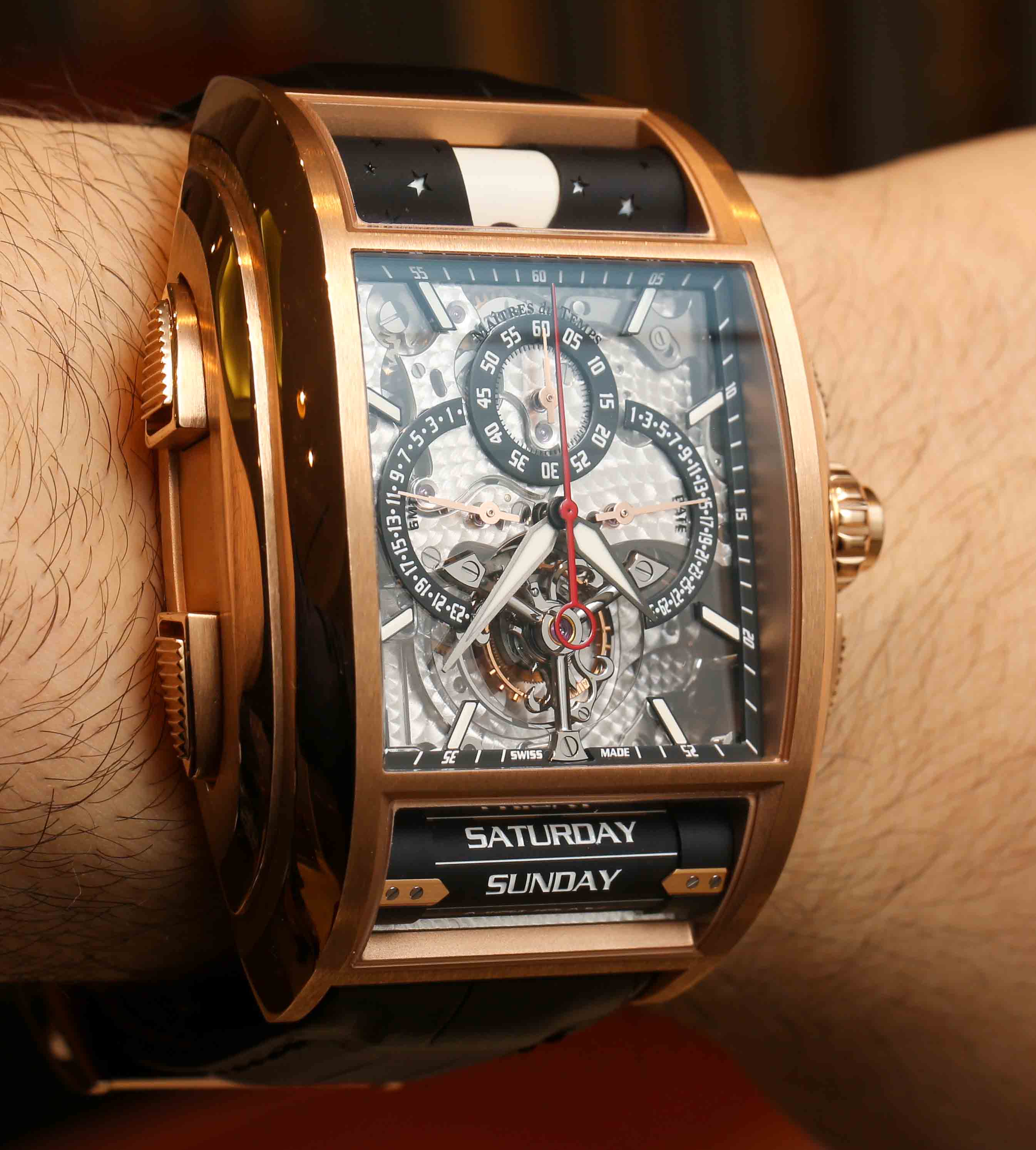
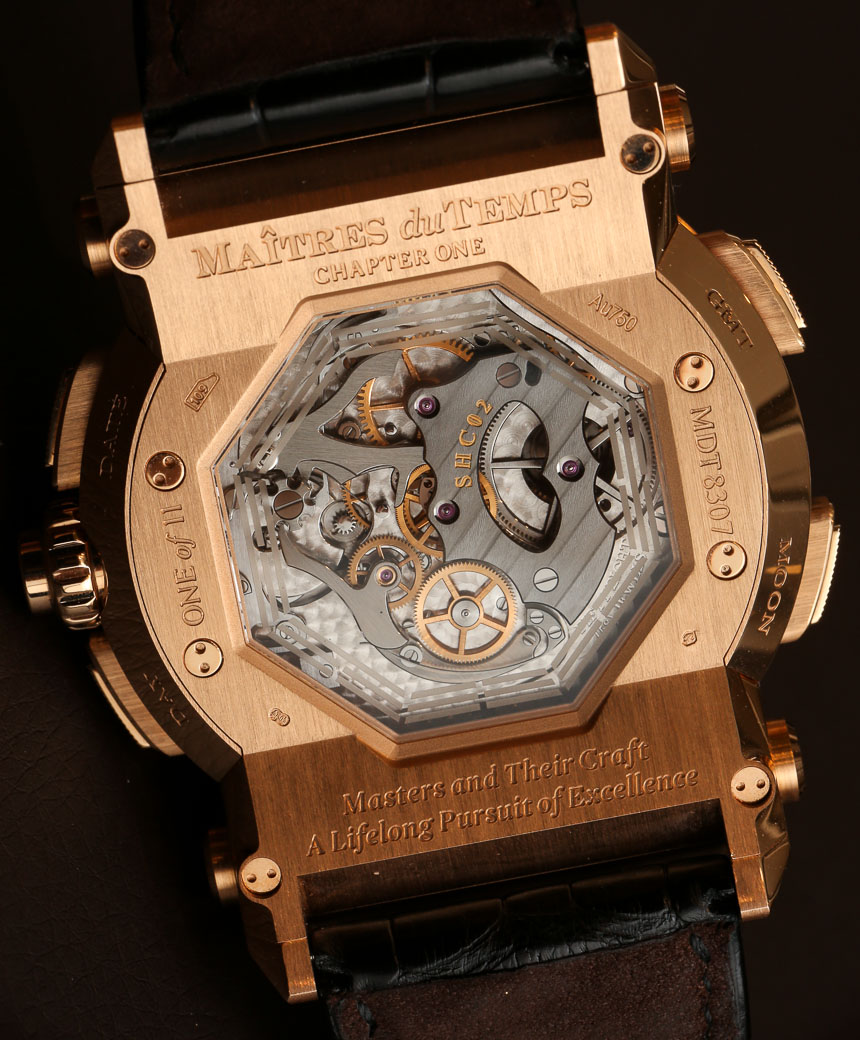
For the Chapter One watch Holtzman called upon a duo of watchmakers. Those where Christophe Claret and Peter Speake-Marin. Whether Holtzman was influence by Max Busser’s Opus watch concept that he created for Harry Winston, or came up with the idea alone doesn’t really matter. It was an interesting take to have multiple watchmakers collaborate on a single design. Christophe Claret however had what is perhaps the most important role as he built (and still does) the movements for each Chapter One watch.
I also believe that Claret influenced many other elements of the Chapter One design. A very important one being rollers, as well as the pushers. To my knowledge the Chapter One (and later on the Chapter Two) were the first watches in the world to use rollers to indication information in such a manner. Claret helped in this regard, and is always a go-to person when people want to indicate a traditional complication in a novel way. Claret expressed the roller concept in a slightly different way when he built the Shabaka watch for Jean Dunand a year later. Jean Dunand (currently in some type of a hibernation due to the untimely death of the person running it) was also distributed by Holtzman.
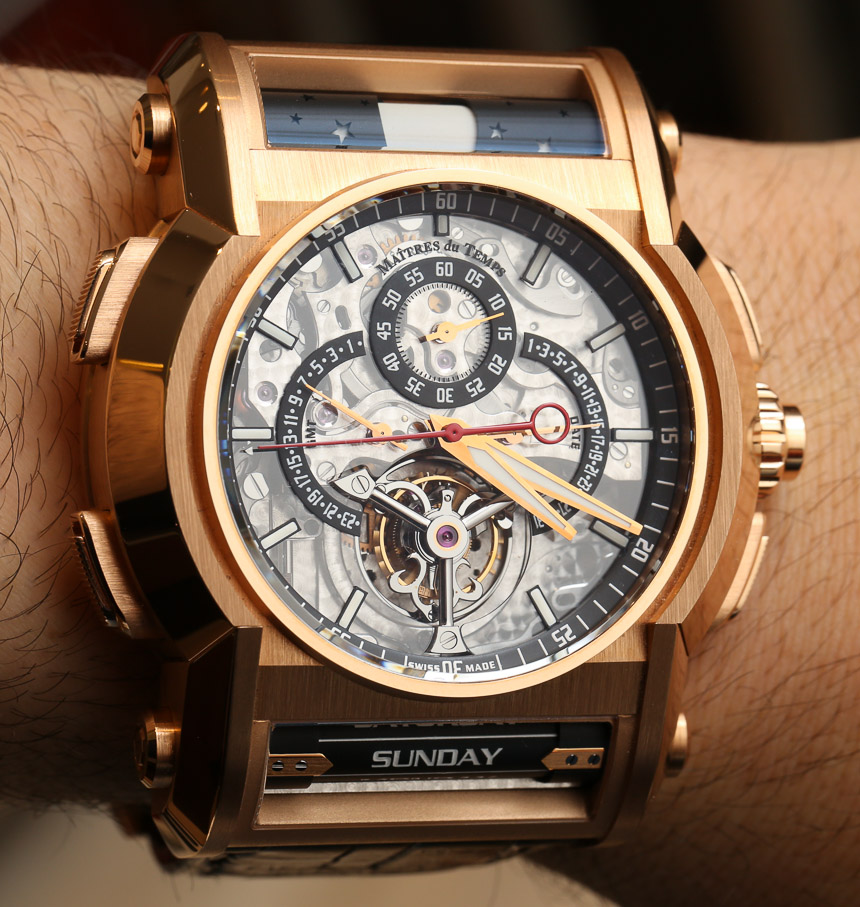
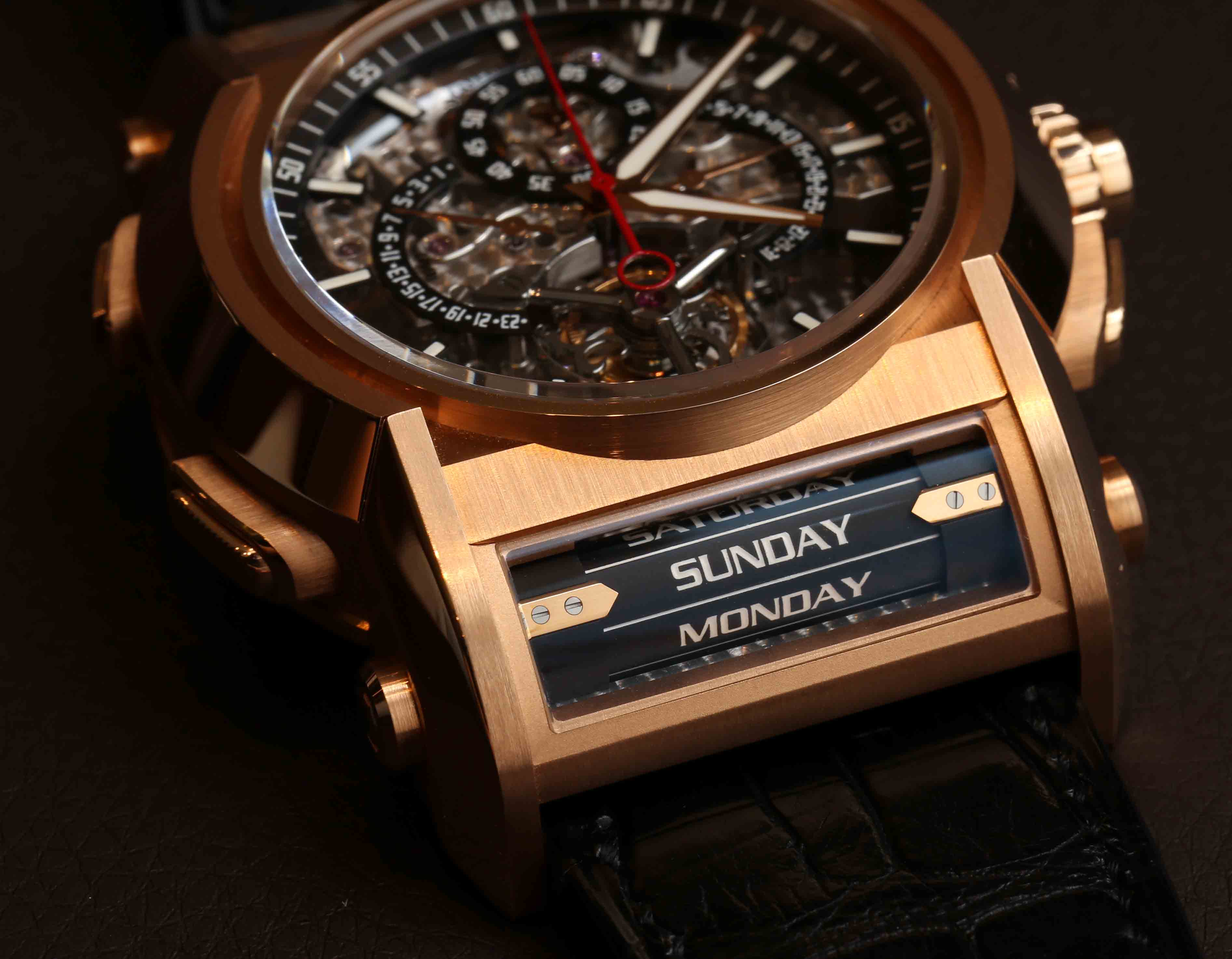
The rollers are one of the reasons that the Chapter One models are so large. Produced mostly from aluminum, the rollers are an essential part of the collection’s design DNA. They are used to indicate on the top of the watch, the moon phase, and at the bottom of the watch, the day of the week. Another unique trait in Chapter One watches (which I don’t think exists in any other watch) are special safety levers in the pushers. Pushers are not something the Chapter One was has an deficit of. There are actually five of them all over the case.
Four of the pushers have the special safety lever. Basically, you need to slide the little lever with your finger before the pusher will engage. It is a few smooth action and it works well. Why is there a need for them? Small labels on the rear of the case are placed near each of the pusher locations. They are actually instructions letting you know what the pushers do. When I discussed the Chapter One upon its debut, I mentioned how much I loved this feature. A $100 Casio has its buttons labeled, but most $100,000 watches don’t. I never liked that and felt that more timepieces needed to be more user friendly given their prices. So when the almost half million dollar Maitres du Temps Chapter One came out with this as a feature… I was thrilled. But it still pisses me off that you need to spend half a million for it.
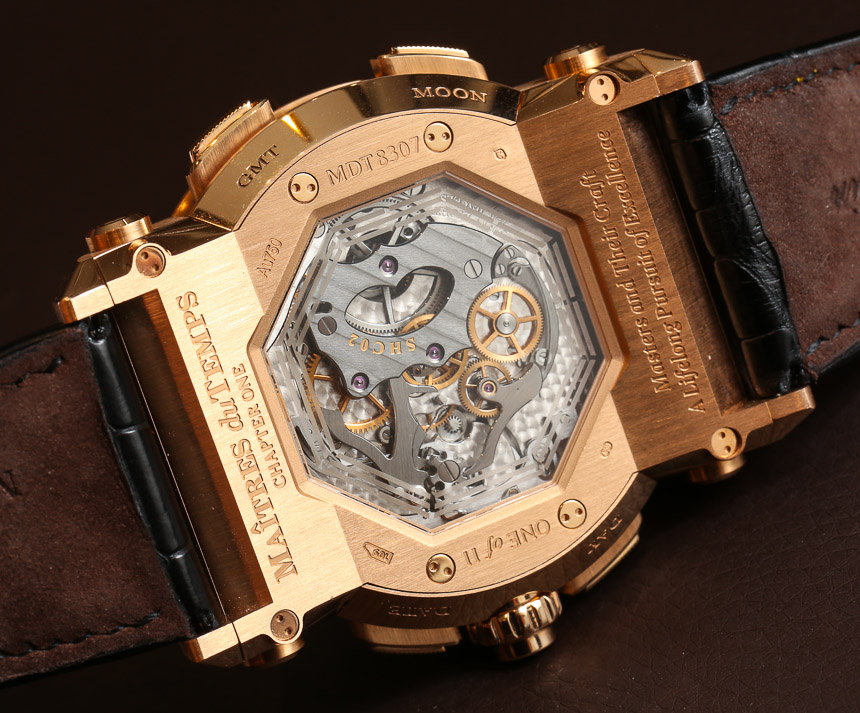
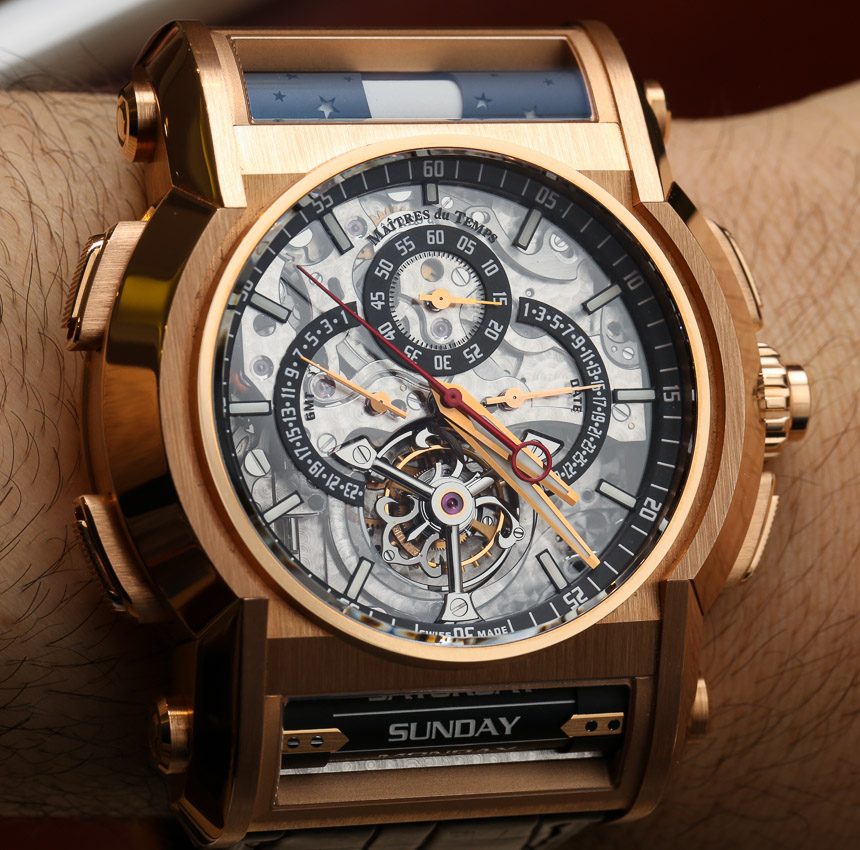
Anyhow, because each of these pushers are used to adjust important functions for the calendar and other info, you probably don’t want to accidentally press them. This is usually taken care of by using inset pushers… but then you still need a stylus or a pin to adjust the watch. This way you can adjust the date without having to look for an extra tool, but don’t have to worry about changing the GMT time when putting your hand in your pocket.
Scratch that, you can’t put your hand in pretty much any pocket while wearing a Chapter One. This is perhaps one of the largest watches I’ve ever had the pleasure of putting on my wrist. In fact, the follow-up version to the original Chapter One was the Chapter One Round (debuted here). The idea behind the new “Round” case was to make the Chapter One a bit more wearable. Did it succeed? A bit yeah, but not intensely so. The Chapter Two watch is much more wearable, but the Chapter One still remains a watch for “well-sized” wrists. I am not going to joke around about gorilla wrists or anything like that. You are born with whatever size wrists you have. I happen to have small ones myself, and a lot of people can’t wear a Chapter One without looking a bit silly. Then again, some people with larger wrists look silly wearing smaller watches. In a way, the price and size of the Chapter One watch together just make it THAT much more exclusive when it comes to being able to both afford and wear one.
